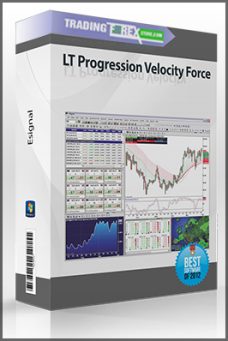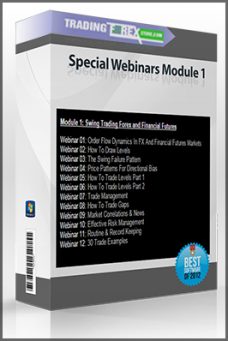Description
Wyckoffanalytics – SCAN FOR SUCCESS! PART I – PROSPECTING FOR ACTIONABLE WYCKOFF TRADE CANDIDATES
**More information:
Get Wyckoffanalytics – SCAN FOR SUCCESS! PART I – PROSPECTING FOR ACTIONABLE WYCKOFF TRADE CANDIDATES at premiumoftrader.com
Description
You’ve learned and practiced the fundamentals of the Wyckoff Method and are finding it to be profitable enough to use for your trading. However, like many Wyckoffians, you’ve probably found that identifying actionable Wyckoff structural opportunities in the U.S. equity markets can be quite time-consuming. Scanning routines available on many platforms can quickly pinpoint conventional technical analysis swing trade candidates based on indicators or candlesticks. However, these scans are not necessarily optimal for the Wyckoff trader.
In Scan For Success, John Colucci and Roman Bogomazov will show you how to markedly reduce the time needed to create watchlists of actionable trade candidates by using scans and filters based on Wyckoff logic.
Here what you’ll get:
- A discussion of the meaning and roles of scanning and filtering in a trading plan
- The uses of scanning beyond the identification of trade candidates
- The basics of scanning on Stockcharts.com
- Scan query formation and syntax
- Exporting scan results to chart lists
- Working with scan results
- Analysis of chart results to determine scan efficacy
- Broadening scan queries for trend identification and Wyckoff structural position
- Structural element scanning, including accumulation, distribution, re-accumulation and re-distribution
- The use of the powerful “OR” structure
- Relative strength scanning
Forex Trading – Foreign Exchange Course
Want to learn about Forex?
Foreign exchange, or forex, is the conversion of one country’s currency into another.
In a free economy, a country’s currency is valued according to the laws of supply and demand.
In other words, a currency’s value can be pegged to another country’s currency, such as the U.S. dollar, or even to a basket of currencies.
A country’s currency value may also be set by the country’s government.
However, most countries float their currencies freely against those of other countries, which keeps them in constant fluctuation.



